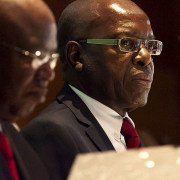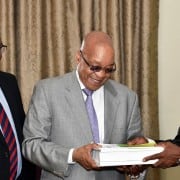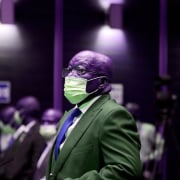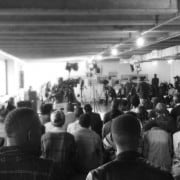|
Getting your Trinity Audio player ready...
|
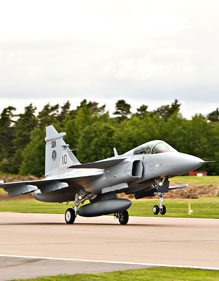 By Lee-Ann Alfreds
By Lee-Ann Alfreds
Almost one year after the start of proceedings, the first phase of public hearings of the Arms Procurement Commission has drawn to a close.
But little – if anything – new has been learnt of South Africa’s controversial 1999 arms deal which the commission has been tasked with investigating.
“Nothing came to light in the first phase,” anti-arms campaigner Terry Crawford-Browne insists. “I have had the affordability report (which showed South Africa would not benefit from the deal) since 2003, and it was already in the public domain in 2001. (Former defence secretary) Pierre Steyn only confirmed what was reported in the Joint Investigation Team report in 2001, that he had resigned in 1998, refusing to take accounting responsibility for the BAE Hawks and BAE/Saab Gripens because of the obvious fraud of the offsets and that price was removed from consideration by way of Modise’s ‘visionary approach’.”
Fellow arms critic Richard Young – who was unable to be the first witness to testify in phase two as scheduled, because he is recovering from an eye operation – agrees “not much at all” that was new came to light during the first phase which was aimed at investigating the rationale behind the deal and the affordability of the purchases.
“Steyn's testimony should be key, but I think he got rattled in cross-examination. (Acquisition committee co-chairman) Erich Esterhuyse's evidence was also a key, in particular (chief of acquisitions for the defence department) Chippy Shaik’s manipulation of the evaluation formulae. And we confirmed (then minister of defence) Joe Modise’s and Chippy Shaik's abuse of the formal defence acquisition process. But we knew most of that before,” says Young.
“Whether it was purposeful engineering or simple ineptitude, two years have gone by only to get the more or less useless evidence (other than Steyn and Esterhuyse), whereas there is little more than four weeks for 10 crucial phase two witnesses plus Chippy Shaik and (alleged beneficiary) Fana Hlongwane. It's a complete joke.”
Holden: commission has been of use
But Paul Holden, who has written several books about the deal, is not as pessimistic about what was learned, saying a “number of key facts that came out are of importance”.
“The declassification of the affordability report, which was done at our behest, allows this very key document into the public domain for the first time. The report clearly shows that the arms deal was a risky economic venture that could have had dire economic effects in certain circumstances.
Steyn and Esterhuyse’s evidence was also crucial, he adds, as both were at pains to describe and explain how the entire procurement system that was established was neither mandated nor appropriate.
“But what really interested me, and what I think constituted some of the most jaw-dropping evidence, was that presented on the offsets,” says Holden. “The offsets were supposed to mitigate the economic effect of buying such a huge amount of weaponry by getting the arms deal companies to invest in the South African economy. The evidence that was presented showed, very clearly, the promised number of jobs (65 000) never materialised, and that the amount that was actually invested in the economy was way less than was originally promised. (Former trade and industry minister) Alec Erwin’s testimony was especially notable. He essentially admitted that the Department of Trade and Industry could not get the full value of offsets promised because the arms deal companies would simply raise the prices of spares and support!”
Failing to provide access to crucial data
While they disagree on how much useful new information was revealed in phase one, all three as well as the Right2know Campaign agree about “the pattern of secrecy and exclusion” – as R2K terms it – that has prevented information coming out.
“The commission's failure to provide access to so much key evidence is playing into the hands of securocrats who don't want the full truth to come to light. The way it is controlling access to documents is undermining independent voices like Lawyers for Human Rights (LHR). The commission is not asking the hard questions or even apparently engaging with evidence that is before it – in short, the commission does not appear to be acting for the public,” says R2K’s Murray Hunter.
Holden, who along with fellow critics Hennie van Vuuren and Andrew Feinstein is being represented by LHR, agrees there are ”so many obstacles, it is hard to point the most difficult one to overcome!”
The fact that witness statements were not available until the day the witness took the stand; not being given the documents on which the witnesses relied, as many which were deemed classified; and the lack of time to prepare for cross-examination had been a “huge burden”, he says.
“But the biggest obstacle we faced was that the commission refused to admit one crucial document as evidence: the draft version of the auditor-general’s report. This report, I and others have argued for a long time, is absolutely central to explaining the way in which the arms deal selection process was manipulated and highly irregular. Without being able to refer to this document, which formed a large part of our submission to the commission, and not being given documents ahead of time, meant that it was nearly impossible to cross-examine witnesses on procedural irregularities.” Holden maintains.
Holden’s experience is corroborated by Young – the first witness slated for phase two, which began on July 21. Young says not only was he unable to cross-examine witnesses in the first phase because they had stepped off the stand before he received their statement and evidence bundles, but he was also not ready to testify as the commission had not prepared his witness statement and evidence bundle despite having hadtwo years to do so.
Young indicates that he thought phase two would throw up even more obstacles as “the phase one witnesses had plenty of time to prepare and give their evidence, all paid for by Armscor and the relevant government departments”, while the critics do not have the same access to legal counsel or finances.
Holden however is hopeful more will come to light in the second phase, and from the commission as a whole. “What we hope is presumably what all South Africans hope for – that those individuals implicated in corruption are properly held to account. This means airing all the available facts, putting it to them rigorously, and indicating where further evidence will be located if it is identified. It also means calling a whole roster of witnesses who have not been listed so far, including all of the companies involved in the arms deal, and numerous other players in the arms deal game.”


